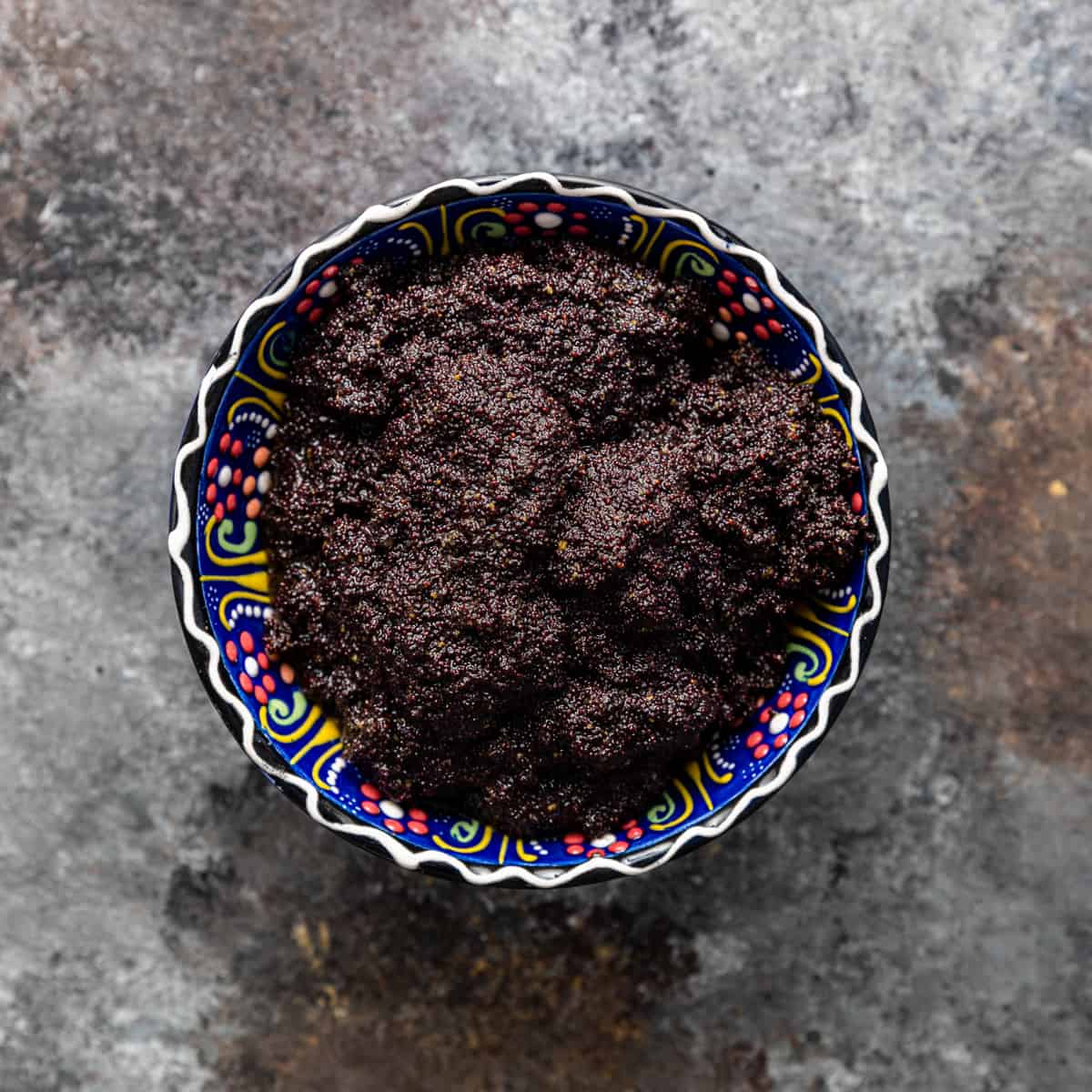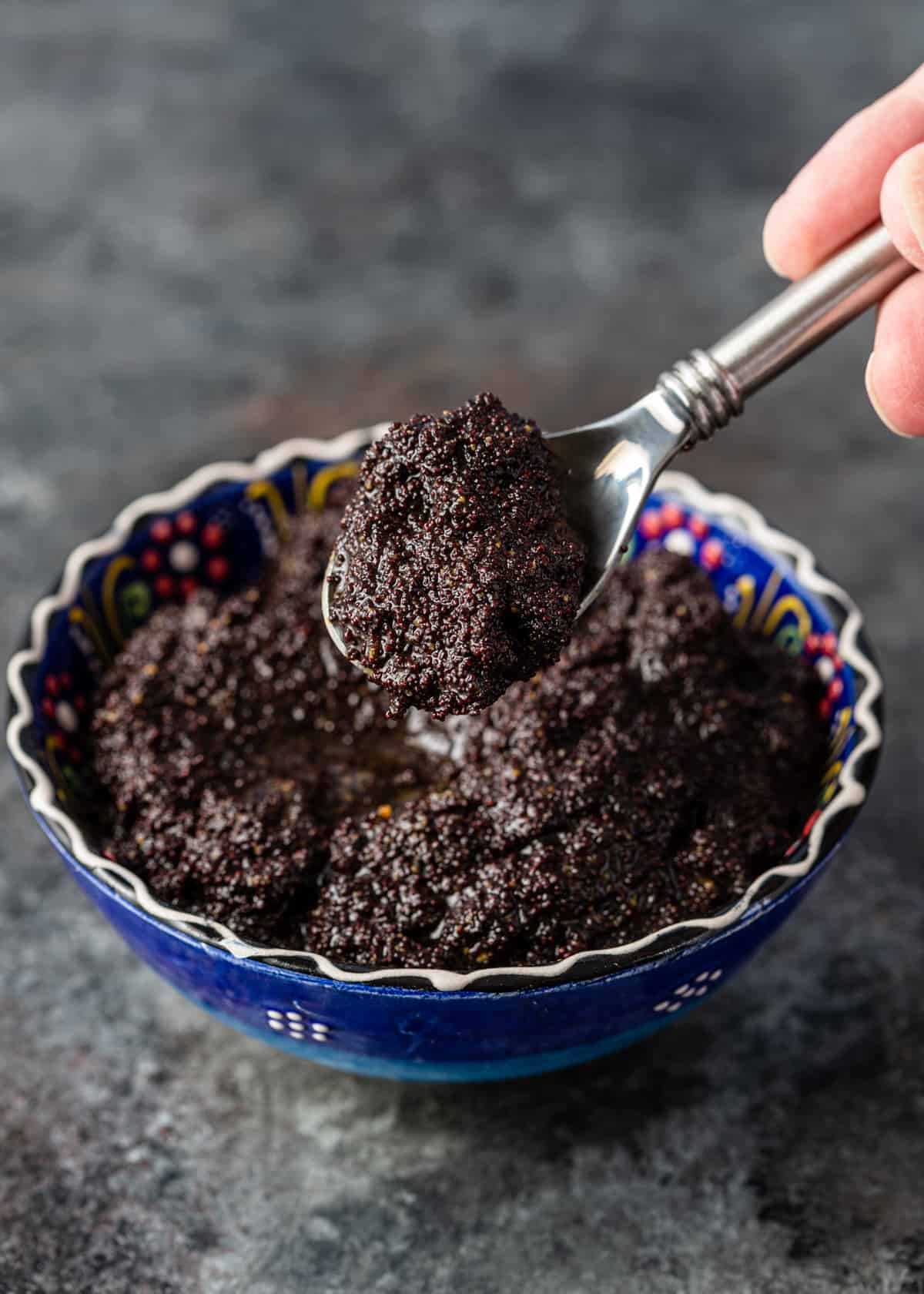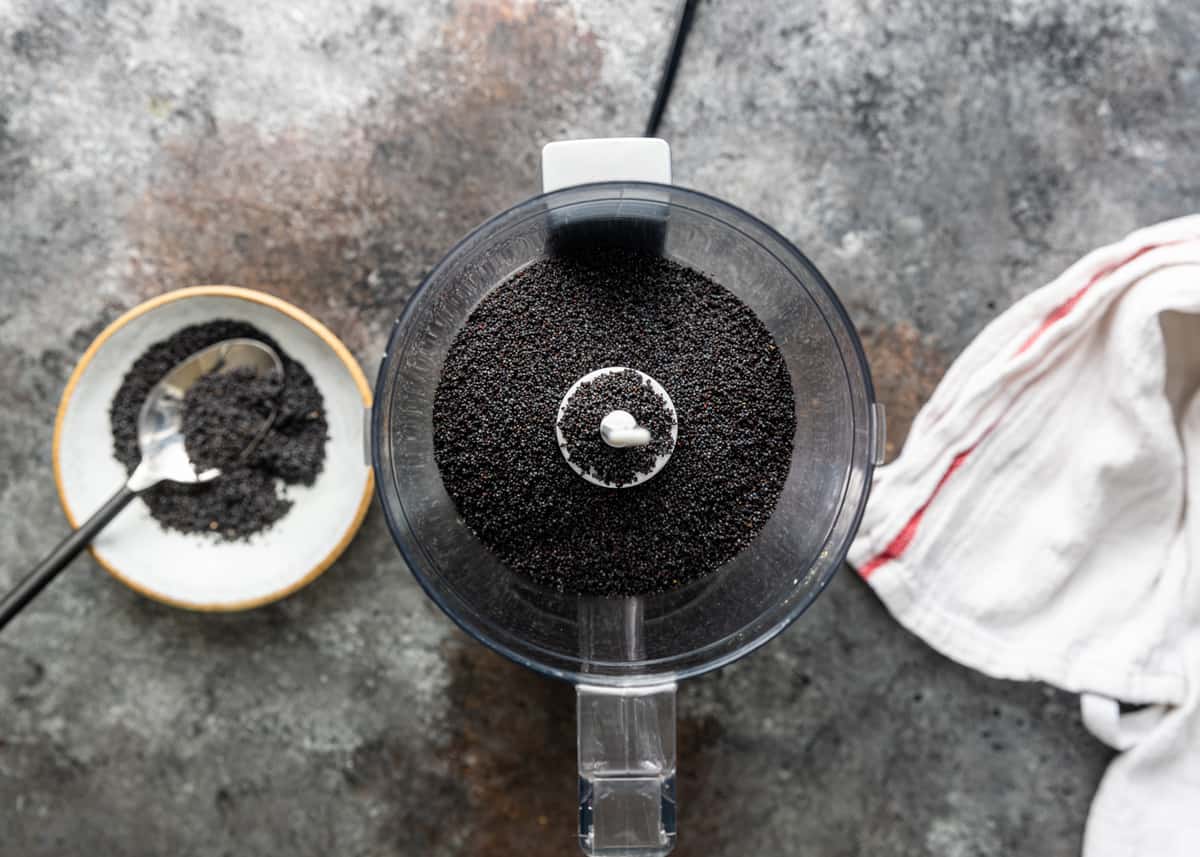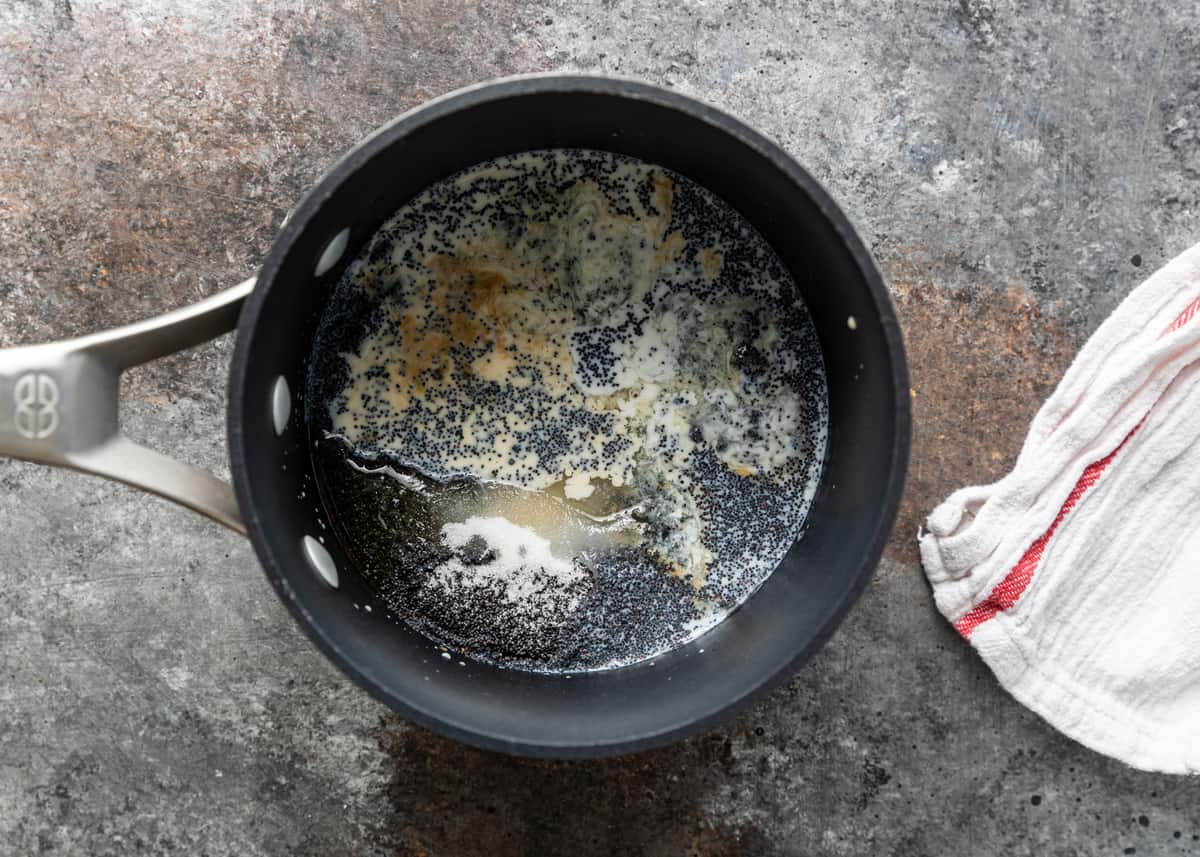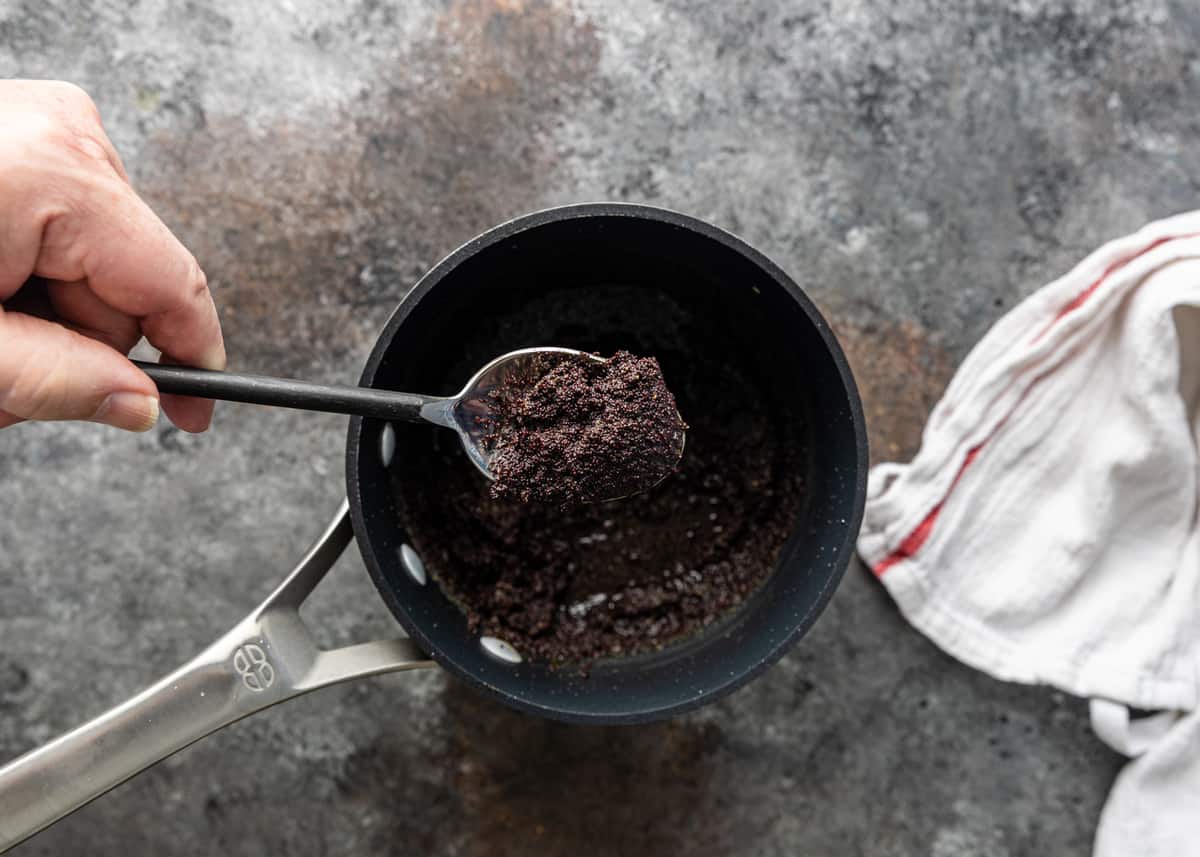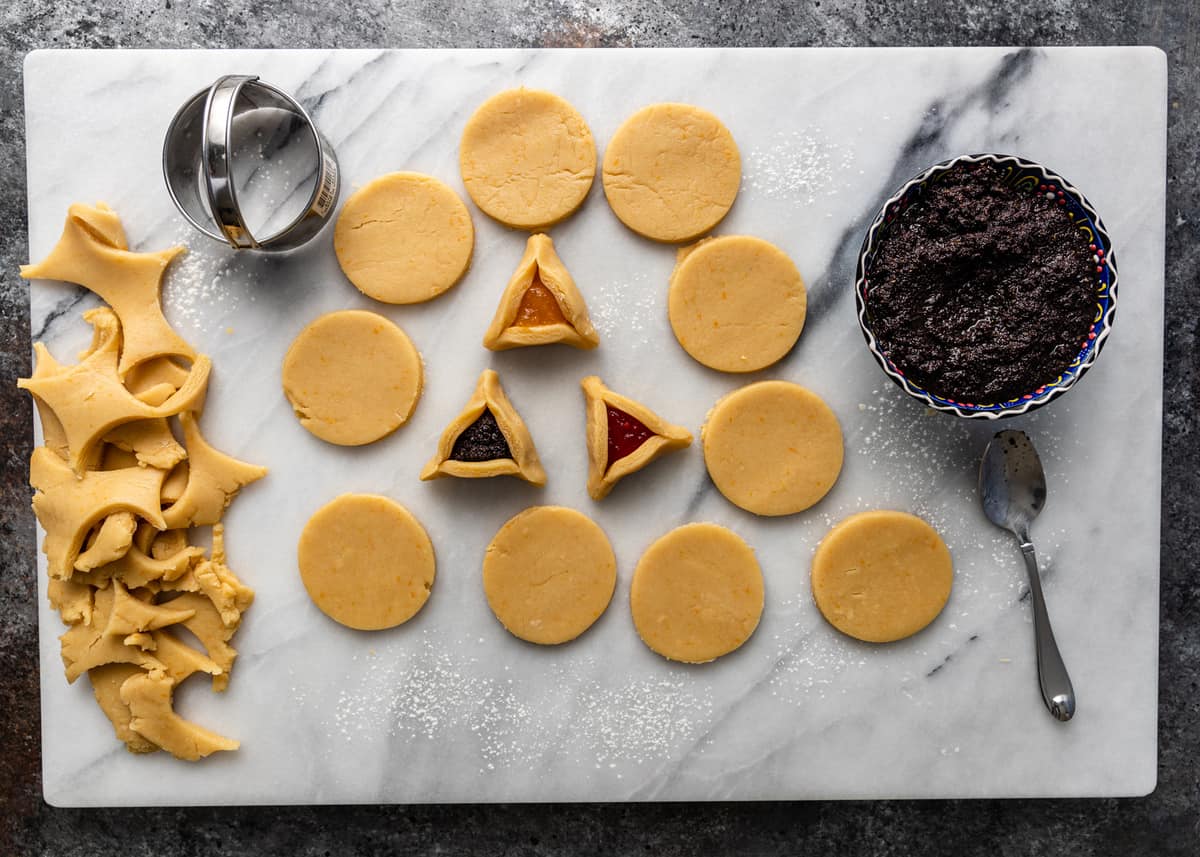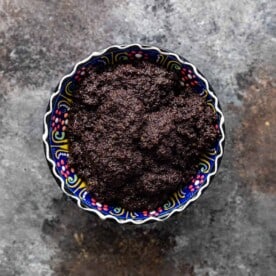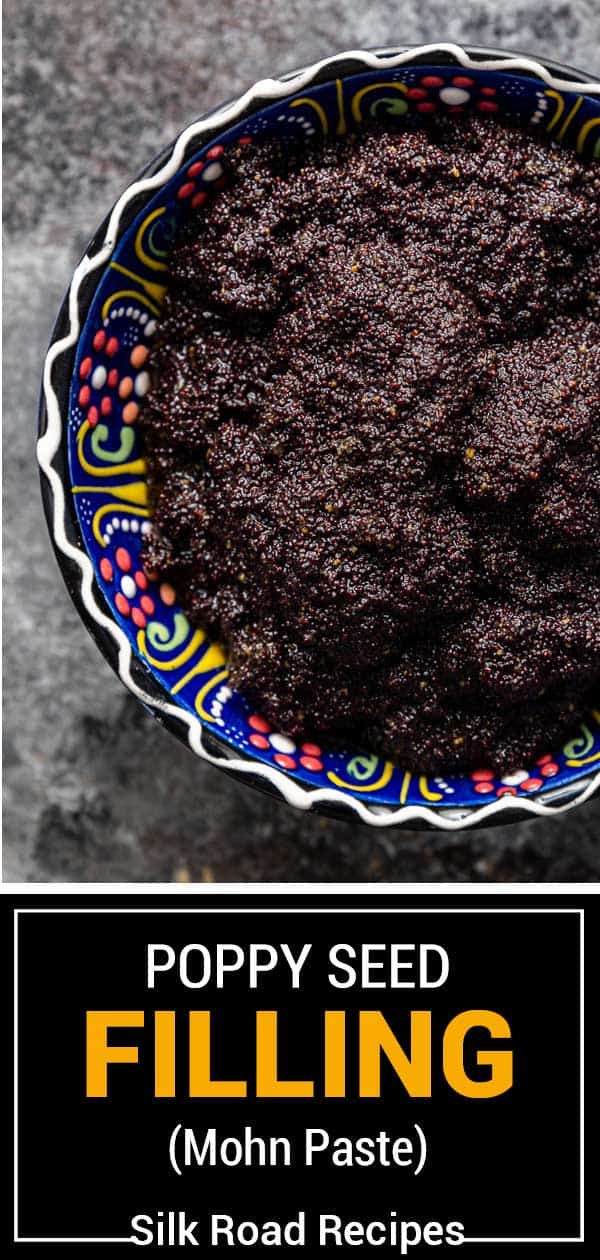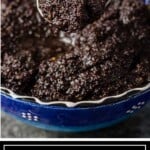published Feb 19, 2024 Derived from the Yiddish and German word for “poppy”, mohn paste is a thick poppy seed filling used in scores of traditional Jewish desserts. It peaks in popularity around the Jewish holiday of Purim, which is celebrated by giving gifts and sharing delicious food and drink with loved ones. Ground poppy seeds take on an almost lemony, fruity flavor. To make poppy seed filling, the powder is simmered with vanilla, lemon juice, milk, and honey until it’s a thick, mellow, and nutty paste! Its most common use is perhaps in hamantaschen shortbread cookies. But did you know you can also mix it into homemade batter for a tremendously moist, dense cake? You can also spread it along rolled cakes, as a filling for buttery rugelach pastries, or braided into mouthwatering babka bread instead of chocolate. Are the flavors here right up your alley? Try maamoul, too — it’s another popular Purim dessert!
Recommended Tools
Food Processor or Coffee Grinder – It’s important to grind the poppy seeds very finely for mohn paste for two reasons: to develop a very smooth, soft texture and to release the sweet, fruity flavors of the seeds.
Storing and Serving
Poppy seed paste is at its sweetest, nuttiest, and creamiest right after it’s made — this is a recipe you’ll want to serve fresh! The filling must remain refrigerated when not in use. Store in an airtight container and refrigerate for up to 5 days. And while you can freeze this filling, the texture of the frozen and then thawed milk-based mohn paste will be off. So again, serve your poppy seed paste fresh! Love this recipe? Share it with the world on Pinterest.
